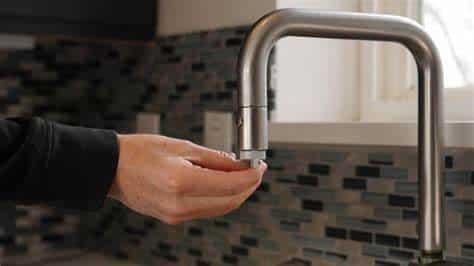5 Tips To Install Faucets In Denver
Installing a new faucet can be a satisfying DIY project that not only enhances the aesthetics of your kitchen or bathroom but also improves functionality. Whether you’re upgrading your faucet for a fresh look or replacing a malfunctioning one, proper installation is crucial. In this article, we’ll provide you with five essential tips to ensure a successful faucet installation.
-
Gather the Right Tools and Materials
Before you start the installation process, make sure you have all the necessary tools and materials at hand. Common tools you’ll need include an adjustable wrench, pliers, a pipe cutter or hacksaw, Teflon tape, a bucket, and a flashlight. Additionally, you’ll require the new faucet, supply lines, and any adapters or connectors as specified in the faucet’s installation instructions.
-
Turn Off the Water Supply
Safety should always be a priority when working with plumbing. Before you begin, shut off the water supply to the faucet you’re replacing. Locate the shutoff valves under the sink and turn them clockwise until they’re fully closed. If there are no shutoff valves, you may need to turn off the main water supply to your home temporarily. Use a bucket to catch any residual water in the pipes when you disconnect the old faucet.
-
Remove the Old Faucet
Removing the old faucet can be a bit tricky, but patience and the right tools will make the process smoother. Start by disconnecting the supply lines from the old faucet using an adjustable wrench. If the nuts are stuck, you can use penetrating oil to loosen them. Once the supply lines are disconnected, remove any mounting nuts or screws that are holding the faucet in place. Gently lift the old faucet out of the sink or countertop and clean the area thoroughly.
-
Follow the Manufacturer’s Instructions
Every faucet installation is unique, so it’s crucial to carefully read and follow the manufacturer’s installation instructions that come with your new faucet. These instructions will guide you through the specific steps for your faucet model, including how to attach the supply lines, secure the faucet to the sink or countertop, and make any necessary connections. Pay close attention to any recommended tools or techniques provided in the instructions.
-
Test for Leaks and Ensure Proper Functionality
After you’ve installed the new faucet according to the manufacturer’s instructions, it’s time to test it for leaks and ensure it functions correctly. Turn the water supply back on and check for any signs of leaks at the connection points. Use a flashlight to inspect for any drips or moisture. If you notice any leaks, turn off the water supply, and tighten the connections as needed. Once you’re confident there are no leaks, test the faucet’s hot and cold water settings and any additional features, such as a sprayer or soap dispenser, to ensure everything works as expected.
FAQs
Do I Need To Hire A Professional Plumber To Install A Faucet?
While faucet installation is a DIY-friendly project, it depends on your comfort level with plumbing tasks. If you’re inexperienced or unsure about certain aspects, it’s always a good idea to consult with a professional plumber. They can ensure the installation is done correctly, preventing potential issues in the future.
Can I Use My Old Supply Lines When Installing A New Faucet?
It’s generally recommended to replace old supply lines when installing a new faucet. Over time, supply lines can degrade and develop leaks, so using new, flexible supply lines with your new faucet installation is a wise choice for long-term reliability.
What Should I Do If My Faucet Still Leaks After Installation?
If your faucet continues to leak after installation, turn off the water supply immediately and check the connections for tightness. Ensure that you’ve used Teflon tape on threaded connections. If the issue persists, consult the manufacturer’s troubleshooting guide or consider seeking assistance from a professional plumber.
Conclusion
Installing a faucet can be a rewarding DIY project that adds both style and functionality to your kitchen or bathroom. By following these five essential tips and carefully reading the manufacturer’s instructions, you can successfully complete the installation while avoiding common pitfalls. Remember to prioritize safety, test for leaks, and ensure proper functionality to enjoy your new faucet for years to come.
For more information related to plumbing services, contact Drain Pros Plumbing Denver at (720) 664-8988.

